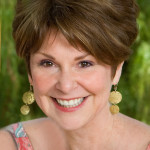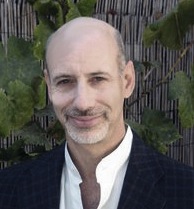What is Cosmic Consciousness? The Quest for Hidden Reality
by Deepak Chopra
Is there such a thing as higher consciousness? For a tiny fraction of the population, who believe they have experienced God directly, this is a spiritual question with a definite answer. But for most people the question is hypothetical. Every spiritual tradition has asserted that there is a hidden reality which can be uncovered through transcending – or going beyond – the five senses. There are elaborate directions for accomplishing this leap, in the form of prayer, meditation, renunciation, and faith – the religious history of humankind has never stopped directing its aspirations to a higher plane. But everyday life consumes our attention, and in a skeptical age the erosion of belief makes higher consciousness seem very far away if not irrelevant.
On a separate track, or so it seems, quantum physics has altered the universe in radical ways. Solid matter has been reduced to invisible waves existing in a field of mathematical probabilities. Time and space form a background in which relativistic quantum fields float, completely different from the reliable time ticked off by clocks, and the space enclosed inside rooms where solid objects find a place. Yet as with the higher dimensions aspired to by religion, quantum space remains hidden from the five senses. For the vast majority of physicists, quantum reality is about intricate mathematical constructs and experiments that validate them using billion-dollar particle accelerators.
Standing back a little, the resulting picture is quite startling. The two most important ways of explaining creation, science and spirituality, both depend on a hidden dimension. Without this dimension there would be no human existence. Shouldn’t that knowledge revolutionize our lives, here and now? Somehow it doesn’t. A missing link needs to be filled in. Otherwise, the world we inhabit will be disconnected from its source, as it largely is right now.
One proposition, which we strongly endorse, is that the missing link is consciousness. Because so many people relegate spirituality to faith, assuming that nothing about God or the soul can be proved, let’s set that aside for the moment. The link has to be scientific. We must thread a path from quantum theory to higher consciousness. This takes some hard thinking, but a huge reward awaits. Hidden reality will reveal itself for what it actually is. Higher consciousness may well become an everyday experience.
To begin, quantum theory, which has been called the most successful scientific theory in history, unequivocally states that we live in a participatory universe – what we consider as an independent, external reality is in fact tied to how we observe it. The late physicist John Wheeler of Princeton and the University of Texas campaigned for the importance of our participation, pushing against the notion that the universe was simply “out there,” like a bakeshop, he said, that we look at with our noses pressed against the window.
Yet how strange to think that when a physicist makes observations and measurements, the quanta that constitute everything in the cosmos change; indeed, it is meaningless to talk of their properties without presupposing an observer. The universe is tied to conscious acts of observation all the way from the most elementary particles to vast galaxies. Moreover, quantum theory assigns a primary role to the quantum vacuum, the emptiness that precedes observable phenomena like atoms and molecules. Unlike the common-sense notion of empty space, the quantum vacuum is abundantly full of dynamic potential. Wheeler, besides coining the term “participatory universe,” also held that the quantum vacuum is primary in all physics, a view that has gained wide acceptance. The quantum vacuum is a vast plenum (fullness) of spacetime “foam,” beyond which time, space – and physics – come to an end.
Source: http://www.sfgate.com/opinion/chopra/article/What-Is-Cosmic-Consciousness-The-Quest-for-5159265.php#page-1
 Phyllis F. Mitz, M.A. has enjoyed a flourishing astrology practice for over 20 years. Using her unique blend of astrology, psychology (in which she holds her Master’s Degree) and spirituality, (in which she is pursuing a Doctorate Degree) Mitz has counseled thousands of people from all walks of life, including celebrities, politicians, and corporate executives, on the best ways and times to find success in life, love and work.
Phyllis F. Mitz, M.A. has enjoyed a flourishing astrology practice for over 20 years. Using her unique blend of astrology, psychology (in which she holds her Master’s Degree) and spirituality, (in which she is pursuing a Doctorate Degree) Mitz has counseled thousands of people from all walks of life, including celebrities, politicians, and corporate executives, on the best ways and times to find success in life, love and work. Michael Gellert is a Jungian analyst practicing in Los Angeles and Pasadena, California. He treats individuals and couples and offers a psychotherapy group and a writing workshop. He was formerly Director of Training at the C. G. Jung Institute of Los Angeles, where he is currently a research instructor. He has also been a humanities professor at Vanier College, Montreal, and a lecturer in religious studies at Hunter College of the City University of New York. Prior to living in Los Angeles he lived in New York City, where he supervised District Council 37’s Personal Service Unit Outreach Program, an employee assistance program for employees of the City of New York.
Michael Gellert is a Jungian analyst practicing in Los Angeles and Pasadena, California. He treats individuals and couples and offers a psychotherapy group and a writing workshop. He was formerly Director of Training at the C. G. Jung Institute of Los Angeles, where he is currently a research instructor. He has also been a humanities professor at Vanier College, Montreal, and a lecturer in religious studies at Hunter College of the City University of New York. Prior to living in Los Angeles he lived in New York City, where he supervised District Council 37’s Personal Service Unit Outreach Program, an employee assistance program for employees of the City of New York.